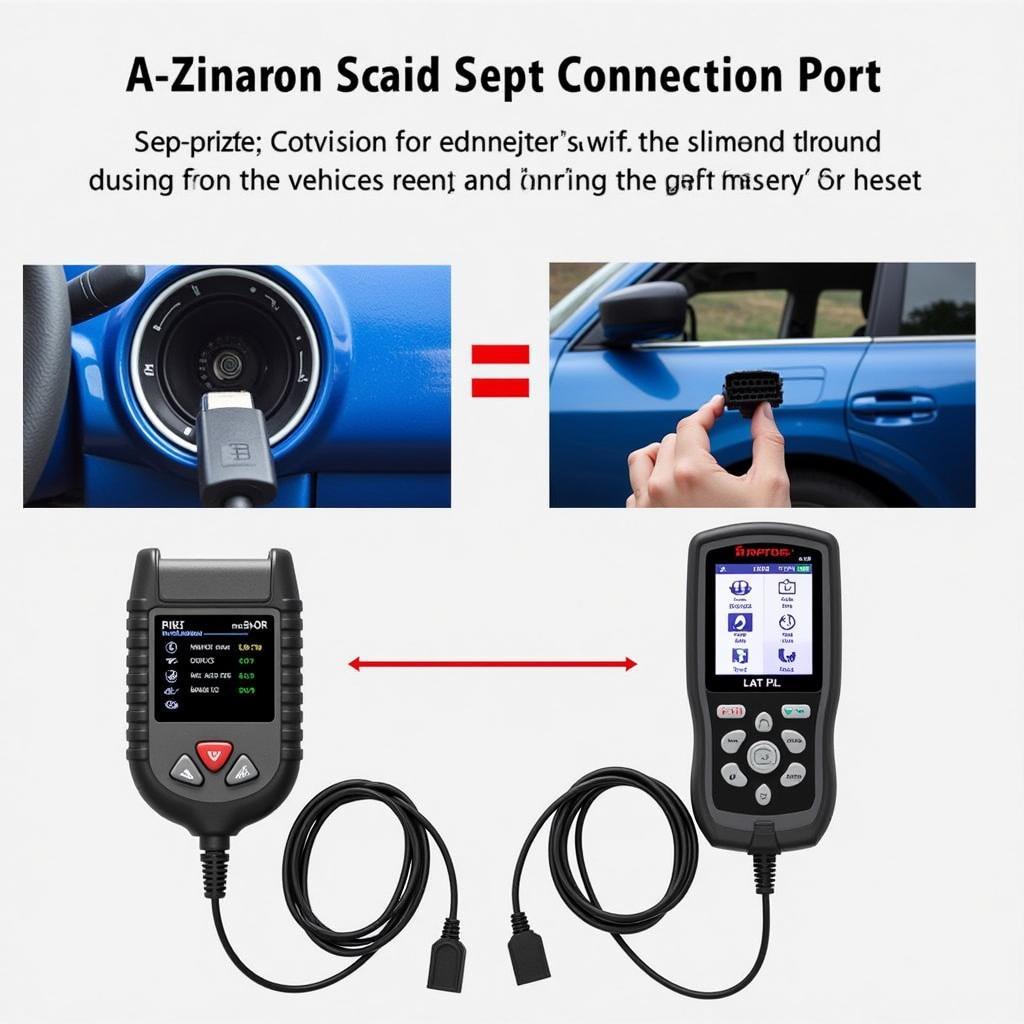A scan tool’s parameter reset function is a crucial aspect of modern vehicle diagnostics and repair. This function allows technicians to recalibrate or relearn various vehicle systems after repairs or component replacements, ensuring optimal performance and drivability. Understanding how to effectively use this function is essential for any automotive professional.
Using a scan tool’s parameter reset function is no longer a luxury but a necessity in today’s complex automotive landscape. As vehicles become increasingly sophisticated, with intricate electronic control systems, the ability to reset and recalibrate these systems is paramount for accurate diagnostics and effective repairs. This is where the parameter reset function of a high-quality scan tool becomes invaluable. This function is vital after replacing parts or performing software updates. It essentially tells the vehicle’s computer, or ECU (Engine Control Unit), to recognize the changes and adjust its operations accordingly. Think of it like restarting your computer after installing new software; it allows everything to integrate smoothly. Want to learn more about advanced scanning techniques? Check out how to make pro tools scan for plugins.
Understanding Parameter Reset
What exactly is the parameter reset function?
The parameter reset function, also sometimes referred to as relearn or recalibration, is the process of returning a vehicle’s electronic control unit (ECU) to its factory settings or teaching it new parameters after a repair or component replacement. This ensures that the ECU recognizes the new component or software and operates correctly.
What are the benefits of using a scan tool parameter reset function? Key benefits include ensuring proper system operation, optimizing vehicle performance, preventing diagnostic trouble codes, and enabling accurate data readings.
When is Parameter Reset Necessary?
Parameter reset is typically necessary after replacing components such as sensors, actuators, or entire control modules. It’s also crucial after software updates to ensure compatibility and correct functionality. Sometimes, a parameter reset is needed to clear persistent fault codes that aren’t resolved by simply clearing the codes with the scan tool.
Why is it necessary to reset parameters after replacing components? Replacing components often disrupts the learned values stored in the ECU. Resetting parameters allows the ECU to relearn these values for the new component, optimizing performance. You might find this resource helpful: scan for plugins pro tools 11.
Different Types of Parameter Resets
There are various types of parameter resets, depending on the vehicle system and the specific scan tool being used. Some common types include:
- Steering Angle Sensor Reset: This recalibrates the steering angle sensor after alignment or replacement, ensuring accurate stability control system operation.
- Throttle Position Sensor Reset: Resets the throttle position sensor to ensure proper throttle response and idle control.
- TPMS Sensor Relearn: This process registers new TPMS (Tire Pressure Monitoring System) sensors with the vehicle’s ECU.
- Transmission Adaptive Learn Reset: Resets the transmission’s learned shift patterns to ensure smooth and efficient shifting after repairs.
- Injector Coding: This process matches fuel injectors to the ECU after replacement, optimizing fuel delivery and engine performance.
How do I know which parameter reset procedure to use? Always consult the vehicle’s service information for the specific reset procedure required for the component or system being serviced. Using the incorrect procedure can lead to improper system operation. Need help finding the right plugins for your scan tools? Check out pro tools scan for plugins.
Performing a Parameter Reset
While the specific steps vary depending on the vehicle and the scan tool, the general process involves connecting the scan tool to the vehicle’s diagnostic port, selecting the appropriate parameter reset function, and following the on-screen prompts. It’s crucial to follow the manufacturer’s instructions carefully to avoid any issues.
What are some common mistakes to avoid during parameter reset? Common mistakes include using the incorrect reset procedure, interrupting the process, and failing to address underlying mechanical issues before performing the reset.
 Scan Tool Connected to OBD Port
Scan Tool Connected to OBD Port
“The parameter reset function is like giving the vehicle’s brain a refresher course. It ensures all systems are working in harmony after repairs, maximizing performance and reliability,” says John Miller, Lead Automotive Diagnostic Technician at Miller’s Auto Repair.
Best Practices for Parameter Reset
Always consult the vehicle’s service information for the correct procedure. Ensure the scan tool’s software is up-to-date. Address any underlying mechanical issues before performing the reset. Don’t interrupt the reset process. Verify proper system operation after the reset. Learn more about managing plugins efficiently with scan new plugins in pro tools.
Conclusion
The scan tool parameter reset function is an indispensable tool for modern automotive diagnostics and repair. Mastering this function allows technicians to ensure optimal vehicle performance and drivability after repairs or component replacements. By understanding the different types of resets, following best practices, and staying up-to-date with the latest technology, technicians can effectively utilize this crucial function to provide high-quality service and keep vehicles running smoothly. Remember, a properly executed scan tool parameter reset is essential for complete and accurate vehicle repairs.
FAQ
- What is a scan tool parameter reset?
- Why is parameter reset important?
- When should I perform a parameter reset?
- What are the different types of parameter resets?
- How do I perform a parameter reset?
- What are some common mistakes to avoid?
- Where can I find information on specific parameter reset procedures?
For further assistance, explore our other resources: how to scan for plugins in pro tools.
Need Help? Contact us via WhatsApp: +1(641)206-8880, Email: [email protected] or visit us at 276 Reock St, City of Orange, NJ 07050, United States. Our customer service team is available 24/7.


